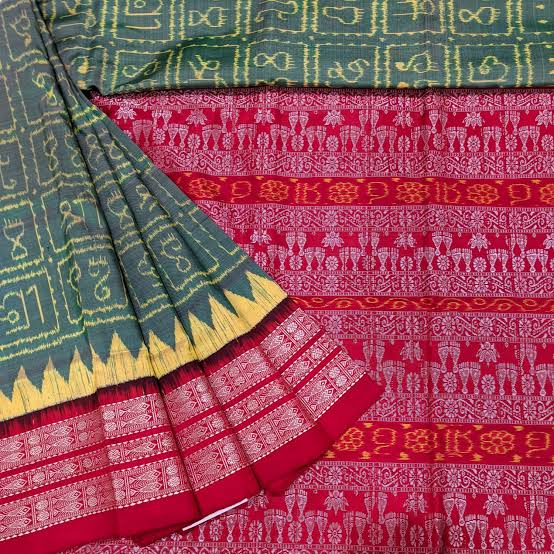A Rich Tapestry of Art, Tradition and Heritage: Odisha’s Top 5 Saree Weaves that Never Fail to Captivate the Soul
Odisha is woven through the interweaving of spirituality and art. Its history is as complex, captivating, fabled, and vibrant as its textile. Weaving is not just a vocation but a cultural expression and a spiritual journey. This is the only land where textiles are created for the gods and not just mortal beings. The state was known for its maritime trade ties with the world; cross-cultural amalgamation led to a well-developed weaving tradition in Odisha.
Odia sarees are amust have textile jewels, an ideal gift. A colourful rainbow of designs, outstanding artistic expression, stories that are captured in the warp and weft of time.
Through Tata Trusts’ Antaran program, saree weaving is being preserved and promoted to conserve the craft while improving the livelihoods of weavers, who are at the heart of this cultural richness.
Here are the top 5 Sarees from Odisha that stand as a testament to the state’s cultural richness:
Sambalpuri Saree:
As the name suggests, Sambalpuri sarees originate from the small town of Sambalpur. These sarees are produced using a resist dyeing technique, tie dye which is referred as Bandha in Odisha. Sambalpuri is renowned for its meticulous intricacy and finesse, breaking away from the yoke of geometric designs to more organic and figurative forms. The most astonishing factor of a sambalpuri sari is use of ikkat with extra weft motifs providing the relief and highlight respectively. Common daily wear saris will have Maccho (fish) and Phula (flower),festive wear will have Singha (tiger), Mayuro (peacock), Padma (Lotus), Baulmara (string of flowers) Shankha (Conch) and Harina (deer). In addition, the saree weaving showcases elements that draw inspiration from indigenous art. Given their distinctiveness, Sambalpuri sarees remain significant.
Khandua Saree:
Odia folk wear Khandua sarees on all special occasions. Khandua was traditionally red or orange in color. The bark of the Sal Tree (ShoreaRobusta) was used to extract the Khandua red colour. In Odia, the word Khandua refers to the cloth that covers the lower half of the body.
A Khandua sari’s main theme is an auspicious elephant representing Buddha, encircled by a trailing vine with peacocks and a huge padma (lotus) flower with simple borders, unlike other odia saris. The “deha bandha” (Sari Body) and the “sari end” (Ikat Pallu) were the two main components of the sari. Khandua has a pattern that seems more like horizontal stripes on the body before you drape it, yet the patterns fall vertically once draped on the body.
Berhampuri Saree:
Extremely lightweight and vibrant, Berhampuri silk sarees are ideal for every occasion. The key differentiators are the three shuttle phoda (temple) border, the dobby or jala/chirai technique for extra weft designs with contrasting pallu and zari borders is the most noticeable feature of Berhampuri saris.
Gopalpur Saree
Gopalpur, a coastal village in Odisha, is situated on the banks of the Brahmani River. Gopalpur Tussar Silk Saree is one of the leading Tussar weaving clusters in India. The most iconic pieces of mythological narrative textiles come from the Gopalpur weaving cluster, the Dola Jatra (Radha Krishna-hindu swing festival), the Bali Jatra (boat festival), and the Ramayana, which are some of the finest examples of extra-weft design mastery. Other motifs such as star, temple, fish, conch, rudrakshya, lotus, peacock, parrot, elephant, swan, pandal are commonly used traditional motifs in Tussar Sarees.
Maniabandha –Nuapatna Sarees
The sole other Odisha region that may compare to Sambalpur in terms of fame. Nothing compares to Nuapatna sarees when it comes to the exquisite craftsmanship and brilliant hues used. Bold ikkat patterns, calligraphic renditions, and curvilinear designs are hallmarks of Nupatna textiles. Renowned poet Jayadeva named an ikat fabric with a calligraphic rendition of Gitagovind (praise of Lord Jagannath) “Poetry on Loom” and presented it to him.
This saree weave features patterns inspired by nature, geometric patterns, and traditional symbols, reflecting the rural communities of Odisha. Beyond their aesthetic appeal, Nuapatna sarees play a crucial role in supporting the livelihoods of local artisans and weavers.

